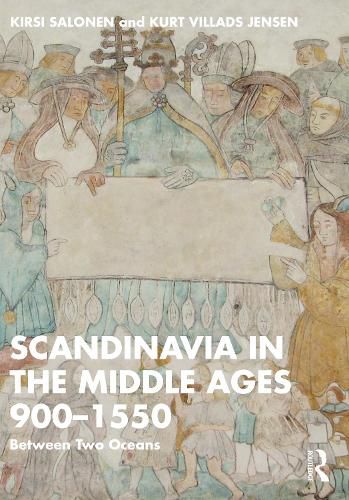Readings Newsletter
Become a Readings Member to make your shopping experience even easier.
Sign in or sign up for free!
You’re not far away from qualifying for FREE standard shipping within Australia
You’ve qualified for FREE standard shipping within Australia
The cart is loading…






Medieval Scandinavia went through momentous changes. Regional power centres merged and gave birth to the three strong kingdoms of Denmark, Norway, and Sweden. At the end of the Middle Ages, they together formed the enormous Kalmar Union comprising almost all lands around the North Atlantic and the Baltic Sea. In the Middle Ages, Scandinavia became part of a common Europe, yet preserved its own distinct cultural markers.
Scandinavia in the Middle Ages covers the entire Middle Ages into an engaging narrative. The book gives a chronological overview of political, ecclesiastical, cultural and economic developments. It integrates to this narrative climatic changes, energy crises, devastating epidemies, family life and livelihood, arts, education, technology and literature, and much else. The book shows how different groups had an important role in shaping society: kings and peasants, pious priests, nuns and crusaders, merchants, students, without forgetting minorities such as Sami and Jews. The book is divided into three chronological parts 900-1200, 1200-1400 and 1400-1550, where analyses of general trends are illustrated by the acts of individual men and women.
This book is essential reading for students of, as well as all those interested in, medieval Scandinavia and Europe more broadly.
$9.00 standard shipping within Australia
FREE standard shipping within Australia for orders over $100.00
Express & International shipping calculated at checkout
Medieval Scandinavia went through momentous changes. Regional power centres merged and gave birth to the three strong kingdoms of Denmark, Norway, and Sweden. At the end of the Middle Ages, they together formed the enormous Kalmar Union comprising almost all lands around the North Atlantic and the Baltic Sea. In the Middle Ages, Scandinavia became part of a common Europe, yet preserved its own distinct cultural markers.
Scandinavia in the Middle Ages covers the entire Middle Ages into an engaging narrative. The book gives a chronological overview of political, ecclesiastical, cultural and economic developments. It integrates to this narrative climatic changes, energy crises, devastating epidemies, family life and livelihood, arts, education, technology and literature, and much else. The book shows how different groups had an important role in shaping society: kings and peasants, pious priests, nuns and crusaders, merchants, students, without forgetting minorities such as Sami and Jews. The book is divided into three chronological parts 900-1200, 1200-1400 and 1400-1550, where analyses of general trends are illustrated by the acts of individual men and women.
This book is essential reading for students of, as well as all those interested in, medieval Scandinavia and Europe more broadly.